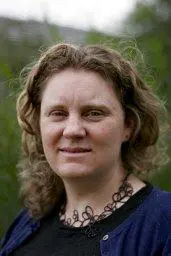Tell us about yourself.

I am an analytical chemist with a history of undertaking research in environmental and public health fields. However, I mostly like measuring things and then trying to interpret patterns in the data.
What inspired you to become a scientist?
My parents both worked in STEM-related fields, and so I always assumed it was something I would be good at – and, I guess, happily, I was! My eventual focus on analytical and environmental chemistry was not consciously planned, but retrospectively, I can see that I have always been more interested in projects that will result in tangible outcomes and that have a clear pathway of benefit to the environment or to society. For example, I was part of the research team that supported the implementation of recycled water in Western Australia. It was great to be involved in such a significant project, even as a small contribution to a much larger effort.
Tell us about your current position?
I am a Senior Scientist at ChemCentre, which is a Western Australian statutory authority that provides specialised chemical and forensic services. As part of ChemCentre’s Research and Innovation team, I focus on the areas of water and air quality, particularly in mine pit lakes and nuisance dust. However, one of the great things about being at ChemCentre is the wide range of research areas that I’ve been able to get involved in, including projects focussed on plastic impact on public health, authentication of tea tree oil, and measuring marker chemicals in plastic explosives.
Tell us about your project and what its primary goal is?
I am leading Project 4.9 ‘Mine Pit Lake Assessment and Management: A national initiative to support mine closure and regional opportunities’ which is bringing together more than 25 CRC TiME partners to identify best practise for pit lake management and beneficial post-mining uses. The project brings together a multi-disciplinary team of researchers with skillsets that encompass First Nations and stakeholder engagement, organisational psychology, mine water sustainability, and science communication, as well as surface hydrology, pit lake and groundwater modelling, and evolution of lake water quality. Through stakeholder consultation, computational advances, and targeted field studies, the project will identify optimised management options for open-cut mines where the formation of pit lakes is a likely closure outcome.
What makes you so passionate about your project?
It has been great to be part of such an interdisciplinary research team, and I am excited to see how we work together to improve management and planning for mine closure in Australia.
How does being involved with CRC TiME help support your love of science?
The primary benefit of involvement in the CRC for both me and ChemCentre is the opportunity to network and collaborate with partners that we would not otherwise interact with. It has also been great to have exposure to research into all aspects of mine closure, not just those focused on technical solutions, as well as follow the development of the CRC’s strategy for First Nations Inclusion.


